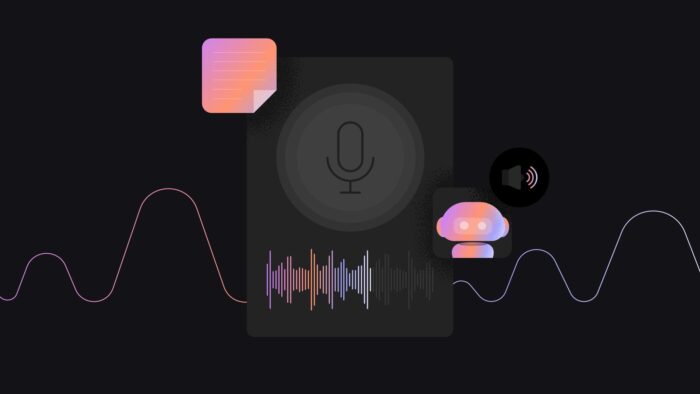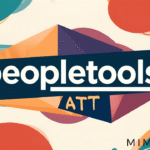How to Use AI Voice Generator?
Meet Jordan, a seasoned video editor, who prides himself on delivering studio-quality content. This week, he’s producing a product demo for a client who wants a warm, confident voiceover. The catch? The voice actor dropped out last minute, and Jordan’s mic setup isn’t exactly broadcast-worthy.
Rather than panic or push deadlines, Jordan turns to an AI voice generator. Within minutes, he’s got a polished narration that fits the script perfectly. No awkward pauses, no flat emotion. For pros like Jordan, AI voice tools aren’t gimmicks. They’re a reliable part of the modern creative toolkit.
In this article, we’ll break down exactly how AI voice generators work, how you can integrate them into your video workflow, and when to use them for best results.

What Is an AI Voice Generator?
AI voice generators are tools that convert written text into spoken audio using synthetic voices. Think of it as voiceover automation. But, powered by advanced machine learning. These systems use neural networks (especially deep learning models) to analyze text, predict pronunciation, and reproduce speech patterns with human-like realism.
While the tech behind them, called text-to-speech or TTS, has been around for years, today’s AI models sound far less robotic and way more natural, thanks to training on massive datasets and emotional intonation cues.
There are two main categories: free platforms, which are great for quick drafts or experimenting, and paid platforms, which offer vastly better voice quality, control, and commercial-use rights. Paid AI voice generator tools often include features like emotion controls, multilingual support, voice cloning, and timeline-based editors that give video creators much more precision.
In a professional video production setting, free tools might work in a pinch. But if you’re aiming for polish, branding consistency, and real-world usability, paid platforms are the smarter bet.
Benefits of Using AI Voice Generators
Whether you’re producing content daily or juggling multiple client projects, AI voice tools come with some serious perks that go beyond convenience.
- Fast Turnaround
AI voice tools can generate audio almost instantly. No need to schedule talent, wait for files, or go through rounds of recording. This is perfect when you’re racing against deadlines or pushing out daily content like tutorials, social media reels, or product updates.
- Budget-Friendly
Hiring voice actors or studio time can rack up costs, especially in the early stages of a project. AI voices are ideal for prototypes, client mockups, or even final outputs on tight budgets without compromising clarity.
- Multilingual & Accent Variety
Need a British accent? Or Mandarin narration? AI tools now offer diverse voice options across languages and regions, making global outreach easier and more authentic.
- Scalable & Consistent
Whether you’re voicing one training video or 100, AI ensures tonal consistency across all assets. It’s a scalable solution for large projects like eLearning modules, onboarding videos, or campaign rollouts, especially when uniformity matters.
Step-by-Step: How to Use an AI Voice Generator
Once you’ve chosen your tool, using an AI voice generator is a straightforward process. But to get a polished, production-ready result, every step needs attention.
Step 1: Write your script.
Keep it tight, clear, and conversational. Read it aloud to catch awkward phrasing or unnatural flow.
Step 2: Paste or upload the script into your chosen AI voice generator.
Most platforms allow direct text input or script file uploads (like .txt or .docx).
Step 3: Choose your voice.
Pick a voice that suits your brand tone – male or female, formal or casual, fast or slow. Paid platforms often offer finer control over tone, accent, pacing, and inflection.
Step 4: Refine delivery.
Tweak pronunciation, add strategic pauses, and emphasize keywords. Many tools offer timeline-based editors or SSML tags to fine-tune output.
Step 5: Export your audio.
Once satisfied, export the audio in your preferred format (MP3/WAV) and sync it with your visuals in your editing software.
Pro tip: When syncing voiceovers with B-roll, animations, or subtitles, use visual markers or audio waveforms to align scenes to speech cues. Don’t overcrowd scenes. Let the voice breathe with the visuals. Silence and pacing are tools, too.
Common Pitfalls and How to Avoid Them

Even the best AI voice tools can produce mixed results if you’re not careful. Here are a few issues to watch out for and how to fix them.
Overly Robotic Delivery
Not all AI voices are created equal. Free tools often sound flat or lifeless. Opt for professional-grade, paid platforms that offer nuanced tones and human-like inflections.
Mispronunciations
Technical terms, names, or regional phrases can trip up any AI. Use phonetic spellings or the tool’s pronunciation editor to fix awkward outputs.
Awkward Pacing or Emphasis
Sometimes the emphasis falls on the wrong word or the pacing feels rushed. Most advanced tools include timeline or pitch editors. Use them to fine-tune pauses, tone shifts, and sentence flow.
Wrapping Up
AI voice generators have become invaluable tools for video creators aiming to deliver professional, polished content quickly and efficiently. By understanding how to leverage these tools effectively, you can save time, cut costs, and scale your voiceover needs without sacrificing quality.
While there are common pitfalls, choosing the right platform and paying attention to details like pacing and pronunciation ensures your audio sounds natural and engaging. Embracing AI voice technology isn’t just convenient; it’s a smart move for any modern video production workflow.





